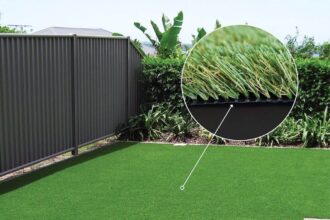Understanding Andrigolitis
Have you recently come across the term “andrigolitis” and wondered what it means? You’re not alone. Andrigolitis is a condition that few people are familiar with, but understanding it is essential for those who might be affected. This blog post aims to demystify andrigolitis, offering insights into its symptoms, causes, and treatment options. By the end, you’ll have a comprehensive understanding of the condition, and you’ll know how to seek appropriate care if needed.
When tackling a health condition, it’s crucial to arm oneself with knowledge. Whether you or a loved one is grappling with andrigolitis, this guide is designed to provide you with the information you need to manage the condition effectively. We’ll explore everything from its symptoms to the latest treatment methods available.
What Is Andrigolitis?
Defining the Condition
Andrigolitis is an inflammatory condition affecting various parts of the body, primarily targeting the joints and muscles. This can lead to severe pain and discomfort, making everyday activities challenging. The term “andrigolitis” itself is derived from Greek, with “andro” meaning “man” and “itis” indicating inflammation.
Prevalence and Demographics
Though relatively rare, andrigolitis can affect individuals across different age groups and demographics. However, it seems to be more prevalent in adults aged 30 to 50. Both men and women are susceptible, but some studies suggest a slightly higher incidence rate in men.
Causes and Triggers
The exact cause of andrigolitis remains unknown, but research points to a combination of genetic, environmental, and lifestyle factors. Potential triggers include stress, poor diet, and lack of exercise. Interestingly, individuals with a family history of autoimmune diseases may be at a higher risk.
Symptoms of Andrigolitis
Early Signs to Watch For
Identifying the early symptoms of andrigolitis can be challenging, as they often mimic other conditions. Common initial signs include joint discomfort, muscle pain, and fatigue. These symptoms can be intermittent, making them easy to overlook.
Progression of Symptoms
As the condition progresses, symptoms can become more pronounced and persistent. Chronic pain, stiffness, and swelling in the affected areas are common. Some individuals may also experience fever, weight loss, and general malaise, further complicating diagnosis.
Impact on Daily Life
Living with it can significantly impact one’s quality of life. Routine tasks such as walking, lifting objects, or even typing can become arduous. The chronic nature of the condition often leads to emotional distress, requiring a holistic approach to treatment.
Diagnosing Andrigolitis
Initial Consultation
If you suspect you have andrigolitis, the first step is to consult a healthcare professional. They will likely begin with a thorough medical history and physical examination to assess your symptoms.
Diagnostic Tests
To confirm a diagnosis, your doctor may recommend several tests. Blood tests can check for markers of inflammation and autoimmune activity. Imaging studies, such as X-rays, MRIs, or CT scans, can provide a detailed view of the affected areas, helping to rule out other conditions.
Differential Diagnosis
Because the symptoms of andrigolitis overlap with other diseases, differential diagnosis is crucial. Conditions such as rheumatoid arthritis, lupus, and fibromyalgia must be considered and excluded through rigorous testing.
Treatment Options for Andrigolitis
Medication
Medications are often the first line of defense against andrigolitis. Nonsteroidal anti-inflammatory drugs (NSAIDs) can help reduce pain and inflammation. In more severe cases, corticosteroids or disease-modifying antirheumatic drugs (DMARDs) might be prescribed.
Physical Therapy
Physical therapy plays a vital role in managing it. Tailored exercise programs can improve mobility, strengthen muscles, and alleviate pain. Working with a professional therapist ensures exercises are performed correctly and safely.
Lifestyle Changes
Adopting a healthier lifestyle can make a significant difference in managing andrigolitis. A balanced diet rich in anti-inflammatory foods, regular physical activity, and stress management techniques can help control symptoms and improve overall well-being.
Alternative Therapies
Acupuncture
Acupuncture, an ancient Chinese practice, involves inserting thin needles into specific points on the body. Some patients with andrigolitis find relief through acupuncture, reporting reduced pain and improved mobility.
Herbal Remedies
Various herbal supplements, such as turmeric, ginger, and boswellia, have anti-inflammatory properties. While more research is needed, some individuals with andrigolitis have found these supplements helpful in managing symptoms.
Mind-Body Techniques
Mind-body techniques, including yoga, meditation, and tai chi, can promote relaxation and reduce stress, which may, in turn, alleviate some symptoms of andrigolitis. These practices can complement traditional treatments, offering a holistic approach to management.
Coping Strategies for Andrigolitis
Building a Support Network
Living with a chronic condition like andrigolitis can be isolating. Building a support network of family, friends, and healthcare professionals can provide emotional and practical assistance, making it easier to cope with daily challenges.
Stress Management
Stress can exacerbate symptoms of andrigolitis. Techniques such as deep breathing exercises, mindfulness meditation, and progressive muscle relaxation can help manage stress levels and improve overall well-being.
Pacing and Planning
Learning to pace yourself and plan activities can help manage energy levels and reduce the risk of overexertion. Breaking tasks into smaller, manageable steps and allowing for rest periods can make daily activities more achievable.
Importance of Regular Follow-Ups
Monitoring Progress
Regular follow-ups with your healthcare provider are essential for monitoring the progression of andrigolitis and adjusting treatment plans as needed. These appointments provide an opportunity to discuss any new symptoms or concerns.
Adjusting Treatment Plans
It is a dynamic condition, and treatment plans may need to be adjusted over time. Regular consultations ensure that medications, therapies, and lifestyle modifications remain effective and appropriate for your current needs.
Staying Informed
Staying informed about the latest research and treatment options is crucial for managing andrigolitis. Healthcare providers can offer valuable resources and updates, empowering you to make informed decisions about your care.
Living Well with Andrigolitis
Finding Joy in Everyday Activities
Despite the challenges of living with andrigolitis, finding joy in everyday activities is possible. Engaging in hobbies, spending time with loved ones, and celebrating small victories can contribute to a positive outlook.
Setting Realistic Goals
Setting realistic, achievable goals can provide a sense of accomplishment and motivation. Whether it’s completing a gentle exercise routine or finishing a creative project, celebrating these milestones can boost confidence and well-being.
Seeking Professional Guidance
Professional guidance from healthcare providers, therapists, and support groups can offer valuable insights and support. Don’t hesitate to reach out for help when needed; you don’t have to navigate this journey alone.
FAQs about Andrigolitis
What is the prognosis for andrigolitis?
The prognosis for andrigolitis varies depending on the severity of the condition and the effectiveness of treatment. With proper management, many individuals can lead fulfilling lives, although some may experience chronic symptoms.
Can andrigolitis be cured?
Currently, there is no cure for andrigolitis, but various treatments can help manage symptoms and improve quality of life. Ongoing research aims to uncover more effective treatments and potential cures in the future.
Is andrigolitis hereditary?
While the exact cause of it is unknown, genetics may play a role. Individuals with a family history of autoimmune diseases may be at higher risk, suggesting a potential hereditary component.
How can I support a loved one with andrigolitis?
Supporting a loved one with this disease involves offering emotional support, helping with daily tasks, and encouraging adherence to treatment plans. Educating yourself about the condition can also enhance your ability to provide meaningful support.
Conclusion
Andrigolitis is a complex condition that requires a multifaceted approach to management. By understanding its symptoms, causes, and treatments, individuals can take proactive steps to improve their quality of life. Regular consultations with healthcare providers, a supportive network, and healthy lifestyle choices are essential components of effective management.
If you or a loved one is navigating the challenges of andrigolitis, remember that you are not alone. Reach out for support, stay informed, and take an active role in your care. With the right resources and strategies, living well with andrigolitis is within reach.
For more detailed information and personalized guidance, consider consulting with healthcare professionals who specialize in autoimmune and inflammatory conditions. They can offer tailored advice and support to help you manage it effectively.





